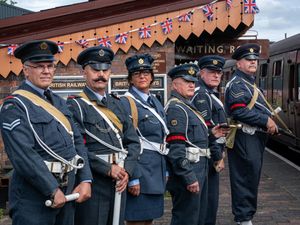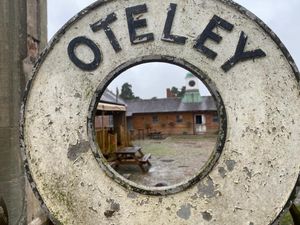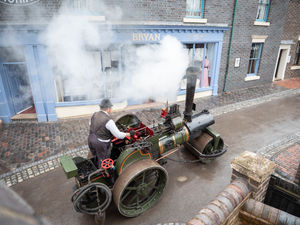Revealed: Links between Shropshire country hall and the King's Coronation
A Shropshire country house, held up as the most important in English history, has links with the remarkable Cosmati Pavement in Westminster Abbey on which King Charles' Coronation will take place.

Both Soulton Hall and the magnificent pavement were constructed along the same geometrical principles, based on Greek mythology.
It is just one of the mysteries of the house, near Wem, uncovered by historian James Wenn.
Mr Wenn visited the hall, home of the Ashton family, to give a lecture about its importance in English history.
He says it could bring tourists to the area not only from across Britain but Europe, and could even see the re-emergence of "The Grand Tour" the cultural tour of the 18th century in which Soulton Hall was included.
The hall was built by Sir Rowland Hill of Hawkestone to give refuge to Matthew Parker, Archbishop of Canterbury and chaplain to Anne Boleyn.
It was at Soulton Hall that the conspiracy that delivered the Geneva Bible, was harboured.

Mr Wenn, who studied at Cambridge University and went on to become an MA in Country Houses of England, said the hall was built in 1556-1560 in the Greek measurements of a square and beyond - a pyramid roof and the windows helping to create a structure related to a rhombic dodecahedron.
In the same way as the Cosmati Pavement, the hall was constructed in an elaborate set of codes in order to carry meaning associated with drama, dance, classical antiquity, philosophy and scripture.
The hall and its pyramid roof, long since gone, was copied in buildings not just in England, but the design was taken to America and features in some of its most important government buildings.
"Soulton Hall is so central to Anglo Saxon culture it is, I believe, the most important country house in England," James said.
As well as its design, the hall houses a concealed chapel in the east front, which is the only truly symmetrical face of 1550s design.
It's 16ft by 16ft size links in with the geometric design and it's the only room in the building to have a central window.
There is also a priest hide in Sir Rowland Hill's home today, where scholars and priests could hide from the authorities during the turmoil of the sixteenth century.
James said such was its importance that the hall was included in the famous Grand Tour.
He said the English on their Grand Tour would visit the cultural gems of mainland Europe.
"But those from Europe had Soulton Hall on their must see list," he said.
"They would stay at Hawkestone and walk to the follies - each constructed so that they could provide views of Soulton Hall."
The hall's construction was of the same ethos of the Cosmati pavement, symbolising the universe, the historian says.
He hopes that Soulton Hall will now be given the importance in history that it deserves and help to bring it back to its former glory.





